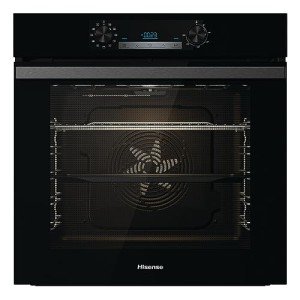Understanding Self-Cleaning Ovens: A Comprehensive Guide to Types and Features
Self-cleaning ovens have actually ended up being a staple in modern cooking areas, providing a practical solution for maintaining a tidy cooking environment without the labor-intensive scrubbing. With Self Cleaning Oven Instructions and features readily available, selecting the ideal self-cleaning oven can make a considerable distinction in both culinary experience and cooking area health. Self Cleaning Oven Features explores the kinds of self-cleaning ovens, their systems, and crucial considerations for potential buyers.
Types of Self-Cleaning Ovens
There are primarily four types of self-cleaning ovens, classified based on their cleaning approaches. This classification helps users understand how each type works and which might fit their requirements best.
| Type | Mechanism | Pros | Cons |
|---|---|---|---|
| Pyrolytic | High-temperature cleaning | Efficient on hard stains | High energy usage |
| Steam | Uses steam to loosen gunk | Eco-friendly, less energy usage | May require regular water refills |
| Catalytic | Coated with catalytic product | Constant self-cleaning | Covering can wear over time |
| Self-Cleaning with Removable Part | Parts can be removed for cleaning | More thorough cleaning options | Not a complete self-cleaning oven |
1. Pyrolytic Ovens
Pyrolytic ovens utilize severe heat, normally between 800 ° F and 1000 ° F, to incinerate food debris and grease within the oven cavity. The process minimizes residue to ash, which can be quickly cleaned away as soon as the oven cools down.
Benefits:
- Highly effective for baked-on spills and difficult spots.
- Requires very little effort post-cleaning-- simply wipe the ash away.
Disadvantages:
- Consumes a considerable amount of energy.
- The high temperatures can cause the outside of the oven to end up being hot, providing a potential safety hazard.
2. Steam Ovens
Steam cleaning ovens run by using steam to loosen gunk and food particles. This technique includes introducing water into a heated chamber where it vaporizes, making it much easier to clean away the loosened debris.
Benefits:
- Eco-friendly option, using less energy compared to pyrolytic ovens.
- No harsh chemicals are required for cleaning.
Disadvantages:
- Regular water replenishment is required for the steam function.
- Might not be as efficient on tough, baked-on spots.
3. Catalytic Ovens
Catalytic ovens are lined with panels that are coated with a special catalytic material that takes in grease and gunk while baking. When Self Cleaning Oven Mode is heated up to about 400 ° F, the covering triggers and breaks down the grease.
Advantages:
- Offers continuous cleaning throughout routine cooking operations.
- Lowers cleaning frequency because the panels are created to break down stains.
Downsides:
- Coatings can subside over time, needing panel replacement.
- Less efficient for extremely hard deposits compared to pyrolytic cleaning.
4. Self-Cleaning Ovens with Removable Parts
Some ovens come with detachable parts, such as the oven rack or the bottom tray, making it much easier to clean those components separately while the primary cavity remains pristine.
Advantages:
- Comprehensive cleaning options depending on the user's choices.
- Permits more extensive maintenance of parts that may not reach heats.
Downsides:
- This alternative does not include a full self-cleaning system.
- Needs manual dedication to wash the detachable elements.
Factors to consider When Buying a Self-Cleaning Oven
When seeking to buy a self-cleaning oven, a number of factors ought to be considered to ensure you get one that fits your kitchen requirements and way of life.
Cleaning Mechanism:
- Choose in between pyrolytic, steam, catalytic, or a combination of removables based upon your cleaning preferences.
Capacity:
- Consider the size of the oven that will fit your cooking habits and cooking area area.
Energy Efficiency:
- Look for models that comply with energy efficiency requirements to save money on energy expenses.
Safety Features:
- Ensure the oven has features that reduce the danger of burns, particularly in pyrolytic models.
Alleviate of Use:
- Features like self-timers or remote control options can improve the user experience.
FAQs
1. How typically should I use the self-cleaning feature?
It is normally recommended to use the self-cleaning feature every one to 3 months, depending upon use and the level of build-up.
2. Is it safe to use the self-cleaning function?
Yes, as long as safety precautions are followed. Guarantee that the oven door stays locked during the cleaning process and keep animals and children away.
3. Can I use regular cleaning items in a self-cleaning oven?
No, you must not use regular oven cleaners as they can damage the self-cleaning surfaces and the heating aspects.
4. The length of time does the self-cleaning cycle take?
The self-cleaning cycle can take anywhere from 2 to 6 hours, depending on the type of oven and the cleaning technique used.
5. Do self-cleaning ovens have any drawbacks?
While self-cleaning ovens can save time and effort, they may take in more energy during the cleaning process, and some techniques might be less efficient on extreme stains.
Self-cleaning ovens provide an innovative method to preserving kitchen area hygiene and benefit. With numerous types offered, each with its own benefits and disadvantages, it's crucial for consumers to assess their cooking habits and requirements before making a purchase. By understanding the various cleaning mechanisms, prospective purchasers can select an oven that will not just fulfill their culinary requirements however also offer long-lasting ease of maintenance and efficiency.

